Clea Simon's Blog, page 42
September 16, 2018
FIVE QUESTIONS with Joanna Schaffhausen
Debut mystery novelist Joanna Schaffhausen has quickly become part of our New England crime fiction family. Already Facebook friends, we got to do an event together at the lovely New England Mobile Book Fair this summer, and I invited Joanna to chat on my blog.
How does a book start for you?

Usually with the hook or premise. For example: A woman carrying a briefcase and a shopping bag is attacked and nearly killed. When she wakes up in the hospital, she finds the cops are baffled and the case grows quickly cold. The cops return her property to her from the night in the attack, but she discovers something that does not belong–an item that belongs to her would-be killer. She uses it to track him down.

Who in your latest book has surprised you most – and why?
Hmm. No Mercy unfolded mostly as I’d envisioned. My heroine, Ellery Hathaway, has been sentenced to group therapy for victims of violent crime. She survived one serial killer only to have another one pop out of the woodwork on her, plus she recently shot a murderer. One of the other group members is a woman who killed her violently abusive husband. Unlike Ellery, she is not feted in the media as a hero. Instead, she goes to prison. She doesn’t like Ellery much, which surprised me at first but makes sense for her character and situation. I think it’s useful to have characters who don’t like your heroes for legitimate reasons. Keeps ’em real.
When and/or where is your latest book set and is there a story behind that setting?
No Mercy is set in Boston. Ellery has fled to the bigger city in hopes of regaining some anonymity after the events of The Vanishing Season. Spoiler alert: it doesn’t work. I love Boston and it was fun using a bunch of its famous and not-so-famous landmarks in the story. In particular, I included a fascinating 7-Eleven in Cambridge that sits at the border of the super rich biotech companies and the low-income housing. It’s patronized by everyone from millionare CEOs to sex workers. You never know who you are going to meet when you step inside!
What are you working on now?
A story of an amateur sleuth who was on the trail of a cold-case serial killer, only she ends up murdered in the same fashion as his original victims of twenty years ago. Did she bring him out of the woodwork by uncovering new clues, or did someone else in her life use her weird hobby to snuff her out?
What didn’t I ask you that I should have?
A number of readers have asked me if the serial killer in my book, Francis Coben, was named after bestselling thriller writer Harlan Coben. The answer is yes! Although not in the way most people surmise, as some sort of tribute. I hate inventing character names and will often use whatever’s handy, including books on my nightstand. Back when I wrote the original draft of The Vanishing Season, several decades ago, I had one of Coben’s early novels nearby when I had to name my villain, so I borrowed his last name. Since that time, Harlan Coben’s work has exploded in popularity (deservedly so!) but I kept the name anyway because now it makes me smile.
September 13, 2018
Bouchercon redux
What is Bouchercon? Only the biggest crime fiction convention on the planet! Think 1,500 fans – including about 600 authors (who are also fans) – all milling about, eating, drinking, talking, signing books, talking some more, and sitting on panels! The annual autumn party moves around, and this year it was in St. Pete, FL, in a gorgeous restored 1925 hotel, the Vinoy. That meant lots of time on the veranda bar! And while I didn’t get to the pool, I did get to walk along the waterfront and visit the incredible Dali museum. But basically I got to meet fans and to be a fan – reading a personalized edition of Sara Paretsky’s latest now! Oh yeah, every author there is more than happy to sign her/his books (and there’s never a charge for a signing! Come on!). I’ve already signed up for next year’s Bouchercon, in Dallas. Will I see you there?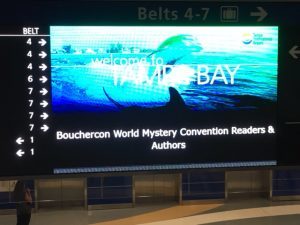
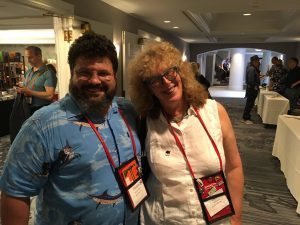
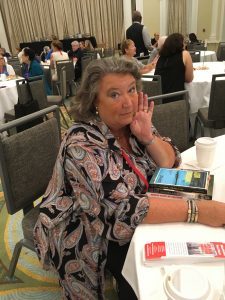
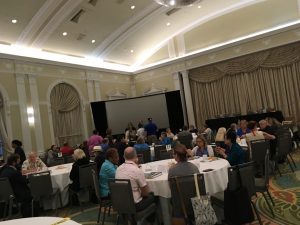
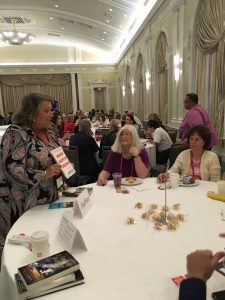
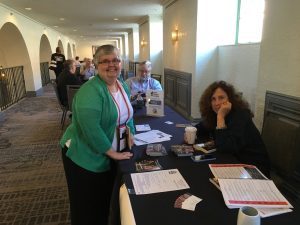
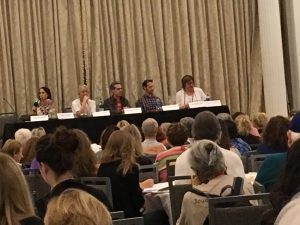
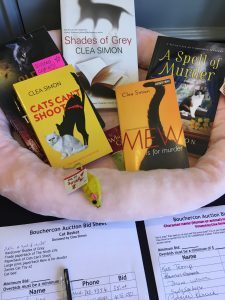
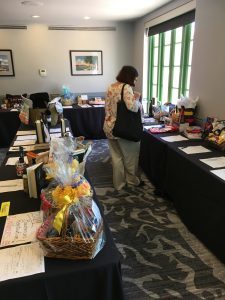


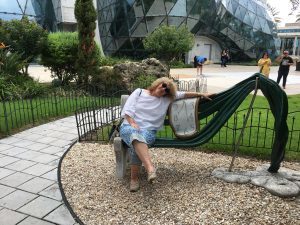

September 9, 2018
FIVE QUESTIONS with Lisa Lieberman
Lisa Leiberman hits the sweet spot between “Casablanca” and Alan Furst, mining the post-World War II world for social and personal tensions. In person, however, she’s a jolly companion, one I always seek out at conferences and book events, which makes me more than happy to host her here today.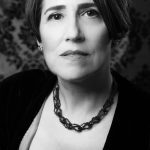
How does a book start for you?
My series is based on old movies, noir classics for the most part. I’ll take a recognizable scene or storyline, then play with it and make it my own. So, All the Wrong Places opens with a body floating in a Hollywood swimming pool, à la Sunset Boulevard. The dead man in that film was killed by his dreams. So is the dead woman in my mystery, albeit under different circumstances.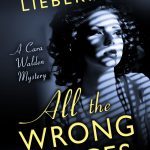
Burning Cold borrows shamelessly from Graham Greene’s treatment for the great Carol Reed film, The Third Man. A rather clueless American arrives in war torn Vienna, searching for a friend who is believed to be dead. I’ve changed the setting to Budapest during the 1956 revolution and the missing friend has become my heroine’s forgotten half brother Zoltán—a man every bit as complicated as the character played by Orson Welles in the movie.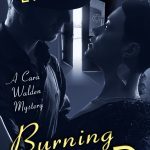
Who in your latest book has surprised you most – and why?
I created a character named Magda, a housekeeper modeled on the key figure in the late Hungarian author Magda Szabó’s novel, The Door. Szabó’s housekeeper is quite tough, but she was never called upon to wrestle a Russian spy to the ground and get him in a half nelson!
When and/or where is your latest book set and is there a story behind that setting?
A crucial segment of Burning Cold takes place in Mád, a small town in the Tokaj wine region on Hungary’s eastern border—a place I chose simply because of the potential for wordplay. Then I learned the fate of Mád’s once-thriving Jewish community.
Some three hundred men, women, and children were locked in the town’s synagogue when the Germans occupied Hungary in 1944, deprived of food and water for three days, then herded into cattle cars with the help of the Arrow Cross (Hungarian militia). Most perished in Auschwitz.

Mád synagogue
I visited Mád during a research trip to Hungary in 2015. The desecrated synagogue was only restored in 2004, a lonely memorial to the town’s murdered Jews. As I stood in the sanctuary, I was overwhelmed by sadness.
My father’s family emigrated to America from this corner of the Austro-Hungarian Empire at the end of the nineteenth century. There’s a scene where one of my characters plays the Kol Nidre on his violin, a small tribute to the memory of my ancestors and all who perished from this region.
What are you working on now?
The third Cara Walden mystery is set in Saigon circa 1957 during the filming of Joseph Mankiewicz’s version of The Quiet American. Yes, I’m still hanging with Graham Greene, am thinking of sending the crew off to Cuba next. (Our Man in Havana, also directed by Carol Reed and starring Alec Guinness, Burl Ives, Maureen O’Hara, and Ernie Kovacs, with cameos from Ralph Richardson and Noel Coward, is a delightful film)
The Glass Forest explores America’s growing colonial involvement in Vietnam after the French left. A quiet insurgency is building in the South and my characters are inadvertently caught up in it. There’s also a love triangle (as in Greene’s novel) and a number of characters based on real people, including a Vietnamese double agent and a dashing Frenchwoman, a former member of the Resistance with a taste for danger.
What didn ’ t I ask you that I should have?
I’d like to talk a bit about escapism. More and more in these troubling times, I turn to my mystery writing for escape. Old movies have always done that for me. Re-watching classics like Sunset Boulevardand Ninotchka(also referenced in All the Wrong Places) and certain Hitchcock films featuring Cary Grant (who makes a cameo in that book) reminds me that playful acts of the imagination are necessary. My stories take readers to dark places, and yet I aim to delight readers with my writing, the vividness of the settings I create, the quirkiness of my characters, along with a bit of black humor for leavening.

Grant and Bergman in “Notorious”
I review classic films on my blog at Deathlessprose.com. In my review of the great Rossellini neorealist film, Rome Open City, I wrote about necessary myths: stories that unite audiences and help them to gird their loins and recommit themselves to a set of common values. Think of Casablanca and the scene where the scene where Victor Laszlo (Paul Henreid) leads everyone in Rick’s bar in a rousing chorus of “The Marseillaise,” drowning out the Nazis.
I hope to do the same.
Trained as a modern European cultural and intellectual historian, Lisa Lieberman abandoned a perfectly respectable academic career for the life of a vicarious adventurer through dangerous times and places. She has written extensively on postwar Europe. Leaving You: The Cultural Meaning of Suicide,her first book, addresses the suicides of notable Holocaust survivors including Primo Levi, Bruno Bettelheim, and Jean Améry. Her translations of Jean-Paul Sartre’s essay, “Paris Under the Occupation,” and Simone de Beauvoir’s essay, “An Eye for an Eye,” are available on Now and Then Reader. “Dirty War,” an account of the French campaign against terrorism in Algeria, was selected as a Kindle Single. Her most recent essay on the failed 1956 Hungarian revolution, “Stalin’s Boots,” was the inspiration for the second Cara Walden mystery.
September 5, 2018
BOUCHERCON bound!
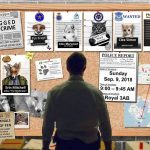 I’ll be on the FOUR-LEGGED FRIENDS in CRIME FICTION panel Sunday at 9 a.m. but grab me for a chat anywhere! See you there! https://www.bouchercon2018.com
I’ll be on the FOUR-LEGGED FRIENDS in CRIME FICTION panel Sunday at 9 a.m. but grab me for a chat anywhere! See you there! https://www.bouchercon2018.com
September 2, 2018
FIVE QUESTIONS with Leigh Perry
How does a book start for you?
It varies by book, of course, but generally speaking, I get going when I can hear the protagonist’s voice.

Now The Skeleton Makes a Friend, my most recent book, is the fifth in the Family Skeleton series. The series features Georgia Thackery, an adjunct English professor and her best friend Sid. Who is a skeleton. Not metaphorical. A walking, talking skeleton who makes bad jokes. Together they solve crimes. Since I’ve got their voices down as well as I’m ever going to, I had to start somewhere else.

The plot idea was for somebody showing up at the front door, looking for Sid. Since nobody outside the family knows Sid exists, I expected to be able to zoom into the plot from that. But nope. I had to figure out who the person at the door was, how she knew about Sid, and why she was looking for him. In other words, I had to hear her voice. Once I had that, I could get moving.
So while I can have a setting I love, a plot that intrigues me, and all that other stuff, unless I know how the protagonist thinks and speaks, I’m dead in the water. Like Sid swimming in a lake.
Who in your latest book has surprised you most – and why?
That person who showed up at the Thackery door? Her name is Jen, and since she’s a teenager, she was accompanied by her mother Judy. Judy was originally intended for background and to provide exposition. Except she kept getting more and more interesting, and ended up being a much bigger part of the book than expected. I felt bad about putting her into a burning building, but these things happen.
When and/or where is your latest book set and is there a story behind that setting?
I created the fictional Overfeld College in the fictional town of Overfeld, a New Hampshire setting where the college and town were founded at the same time, and are intertwined in a love/hate symbiotic relationship. A town green includes a colony of black squirrels. Coincidentally, a while back I visited Oberlin College in the town of Oberlin, an Ohio setting where the college and town were founded at the same time. The town green includes a colony of white squirrels. I think anybody can connect those dots!
By the way, my daughter will be attending Oberlin this fall, so I may steal more ideas. (Interviewer cheers!)
What are you working on now?
I’ve got the copy edits for the new book to finish this week, then a couple of short stories to work on and some trips coming up. After that, I’m going to work on a new book that is so secret that I don’t even know what it’s about.
Which question didn’t I ask you that I should have?
“Why did you decide to write about a walking, talking skeleton?” I wonder about that a lot, too. I honestly don’t remember the exact moment—the idea had been rattling around in my skull for ten years before I sold the series. (Yes, I make a lot of bone jokes. I can’t help it anymore.) The best I can recall is that I’d been told that paranormal mysteries were popular, and I was trying to come up with something new. Vampires? Charlaine Harris had that locked up. Werewolves? My friend Dana Cameron. Witches, ghosts, ghost cats, haunted houses, haunted bookshops, haunted B&Bs, wizards, angels… All done. Suddenly Sid popped into my head, with that name and with that voice, and he haunted me until I had the opportunity to write his stories.
Leigh Perry is two authors in one. As Leigh, she writes the Family Skeleton series about an adjunct English professor who solves mysteries with her best friend, Sid, an ambulatory skeleton. The Skeleton Paints a Pictureis the most recent, and the fifth, The Skeleton Makes a Friend, will be released in November. As Toni L.P. Kelner, she’s the author of eleven novels: eight Laura Fleming mysteries and three “Where are they now?” mysteries, and has published a number of short stories. Along with New York Times bestseller Charlaine Harris, she co-edited a series of bestselling urban fantasy anthologies.She won the Agatha Award for Best Short Story for “Sleeping With The Plush,” and a RT BOOKreviews Career Achievement Award for Mystery Series. She’s also been nominated for the Anthony, the Macavity, and the Derringer awards. Leigh is delighted to return to Florida for Bouchercon. She was born in Pensacola, but has been living in Massachusetts for over 30 years, and both daughters are native New Englanders. She and her husband live north of Boston with one of the daughters, a guinea pig, and a whole lot of books. Visit her online at LeighPerryAuthor.com and ToniLPKelner.com.
August 26, 2018
FIVE QUESTIONS with horror-to-Holmes author Dana Cameron

How does a book start for you?
A book starts for me with some kind of visual cue – a painting, a movie, a place, a piece of clothing or jewelry – and that inspires part of a story. In the first of my Fangborn series, Seven Kinds of Hell , it was visiting the temple site at Claros, in Turkey, and being struck by the way it was set up to make an emotional and mystical impression. Often, an exhibit on fashion will start me thinking about the people who might have worn that clothing. For the Emma Fielding mysteries, it was the places I worked as an archaeologist in New England. After I’m struck by that first inspiration, I need to find out how everything else is connected to it.
 Who in your latest book has surprised you most – and why?
Who in your latest book has surprised you most – and why?Zoe Miller, my protagonist. She’s been broke and hiding all of her life, and when she learns she’s a werewolf, and later, something more than a werewolf, she takes on a leadership role among the Fangborn very quickly. I was surprised by this because she’s so used to being invisible, but her previous powerlessness really schooled her about the uses and abuses of power.
When and/or where is your latest book set and is there a story behind that setting?
I travel a lot, and between that and my interest in history, I’ve written books and stories set all over the world, and set in many different eras. I recently completed a noir novel based on my Anna Hoyt character (first seen in “Femme Sole,” in Boston Noir ), set in 18th-century Boston–which was also the focus of my academic research. I have a Fangborn story set in Ptolemaic Egypt which will be out next month in the collection Hath No Fury because I’m obsessed with Cleopatra and wanted to rewrite her history. A horror story, which will be published in November (in The War on Christmas ), was inspired by a walk through Mt. Auburn Cemetery.
What are you working on now?
I’m currently working on two novels – a Sherlockian pastiche and a horror story. I love that writing lets me explore so many worlds and genres!
Which question didn’t I ask you that I should have?
Q: Two of your Emma Fielding mysteries, Site Unseen and Past Malice, have been made into movies for the Hallmark Movies & Mysteries Channel Will there be any more?
A: Fingers crossed!
Thanks for the chance to chat with you, Clea!
You’re most welcome! I’ve got my fingers crossed for more movies, too!
Dana Cameron writes across many genres, but mostly crime fiction and SF/F/H. Her work has won multiple Anthony, Agatha, and Macavity Awards, and has been nominated for the Edgar Award. Her six Emma Fielding archaeology mysteries were optioned by Muse Entertainment, and two, Site Unseen and Past Malice, were made into a movie for the Hallmark Movies & Mysteries Channel. Dana’s a member of the Baker Street Irregulars, with the investiture of “The Giant Rat of Sumatra.” When she’s not traveling or visiting museums, she’s usually yelling at the TV about historical inaccuracies.
August 21, 2018
Where the stories come from…
and how they get written (and more). Julie Kelleher and I chatted about “writing stuff.” You can listen here:
August 19, 2018
FIVE QUESTIONS with Romalyn Tilgheman
Last January, I was thrilled to be invited to the Pulpwood Queens Girlfriends Weekend. Only a freak thunderstorm made getting to Nacogdoches, TX, a little difficult. First my flight to Houston was diverted to Corpus Christie, TX, and then I missed my ride. Somehow, however, I hooked up with another author – Romalyn – who was coming in from the West Coast to talk about her wonderful To the Stars Through Difficulties. Her flight into Dallas had been diverted as well, and we ended up meeting in the Houston airport for a late dinner and a cocktail as we waited for our late-night ride to the West Texas festival. The best stories always start this way…
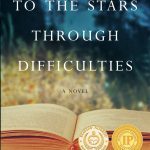
How does a book start for you?
A book starts with an idea, usually based in a place. Not sure why that is. The place usually involves a historical context, as a way of showing similarities between time periods. When I read, I enjoy learning something new about a place and/or time, which undoubtedly influences my own choices.
Who in your latest book has surprised you most – and why?Kansans fight The Wizard of Oz stereotype. Every writers’ conference I attended held up The Wizard of Oz as an example of the perfect story. Every single day I heard a reference to that story. When I was almost finished, I realized my three characters were looking for love, wisdom, and courage, and I needed to simply embrace the fact. (Yes, there’s even a tornado.) So all three characters surprised me by acting so true to form even while fighting the overlay of another famous book.
When and/or where is your latest book set and is there a story behind that setting?
My book takes place in Kansas, in two time periods. It’s a contemporary story, but a found journal from the early 1900s gives it another dimension, time-wise. When I first started my career working with arts councils in rural Kansas, I came across the 59 Carnegie libraries in the state. As I was working with volunteers who were providing cultural opportunities to their communities, I imagined what it would’ve been like to engage in similar activities to bring a library to town. I began collecting notes, which I carried around with me for over 30 years. I love stories of women making remarkable things happen, and the more Carnegie libraries I visit, the more I see this story was played out throughout the country.
What are you working on now?
My next novel takes place in Washington, DC, where the Carnegie library is about to become an Apple Store, complete with creative spaces including a performing arts venue. But the main location will be the Old Post Office, where I worked for the National Endowment for the Arts. (And which is now a famous hotel owned by a man who lives down the street.)
Which question didn’t I ask you that I should have?Why is it so hard to write evil, sinister, even flawed characters? My life’s work has been collecting good and generous friends, overlooking and forgiving idiosyncrasies. It’s so difficult to shift gears and seek out nastiness, bad habits, and wicked intentions!

with Leah Cooper, from the Jefferson (TX) Carnegie library, at the Pulpwood Queens Convention
Romalyn Tilghman is a freelance writer and consultant in arts management. To the Stars Through Difficulties is her first novel, inspired by her work as Executive Director of the Association of Kansas and then as Regional Representative for the National Endowment for the Arts
August 13, 2018
“Write your own damn book” – Bill Corbett
In truth, I think Bill was a little frustrated with me. He was a poet, after all. A lion of the avant garde and a champion of art for art’s sake. I was the new wife of his old friend and colleague, a fledgling writer upset with the negative feedback I’d gotten from the editor of my first book, a work of commercial nonfiction.

Bill Corbett (Courtesy of Nicholas Altenbernd)
In all fairness, I still believe i had reason to be upset. My editor had bought my book based on a proposal and a magazine story. I’d pulled it out of auction because I thought she understood what I was trying to do, and she had, in fact, told me “just write… and send me your first sixty pages of so. We’ll figure out the structure from there.”
I’d taken her at her word. I’d written about a memory that had stayed with me. That still shook me. As directed, I sent it down to her in time to read before we would meet, to strategize the next steps.
I’m good at following directions. I thought that was what I was supposed to do. It wasn’t until I was in her office that I found out that she hated what I’d sent. Too impressionistic. Too soft. Too … I don’t know, but that opening scene had to go. She was emphatic and I was devastated. I’m still not sure what she wanted – I found out afterward there were other things going on with other authors, of course – but this wasn’t it. I was barely holding back the tears when I got on the bus back to Boston. I was lost.
And so I reached out to several more experienced writer friends. That opening, I said, was gone. So now what should I do with my book? How could I write this so it was what my big-deal NYC editor wanted? So I wouldn’t get torn apart again? What I got back were very different takes – each individual to the person whose advice I had sought, but none of them compatible with each other.
I don’t remember how I ended up also talking to Bill about this. Was this at dinner, in the kitchen of their South End townhouse, Beverly cooking something wonderful? Was it after a reading, maybe a Pressed Wafer event? What I do remember is spilling to Bill, and him shaking that big head of his as I described the different angles everyone was suggesting and my own inability to somehow fuse them all into one coherent approach – the one that would be successful, would be accepted. I do remember him brushing off the idea that there was one correct way of doing things, and pointing out that everyone would write “my” story differently. “You’ve got to write your damned book,” he said.
He was right, of course. And ultimately I did – the opening my editor hated went back in, and 20 years later, I still think it works. At least, it’s right for me,
I’m not a poet. I am a commercial writer, and that has its own rules and rewards. But I think of Bill when I hear from struggling young writers, desperate to get it “right” – and to be accepted and published and make a living in a ridiculously difficult field. And I think of him when I make choices in my own writing today, when I weigh one option over another, especially when I go for what feels right over what I suspect may be more conventional.
Was he a little impatient with my desire for acceptance, for commercial viability, that day? Quiet possibly. That said, he was always supportive of me and my work, jovial and kind and happy to celebrate my triumphs, just as he was for Jon, and for the other poets and writers he gathered around him. Some of that was simply his generosity of spirit. Some of it was wisdom.
If you’re a writer, you write. Ultimately, you’ve got to write your own damned book.
Thank you, Bill.
(From the ARTery: Esteemed Poet and Longtime Boston Resident Dies at 75).
August 12, 2018
FIVE QUESTIONS with thriller author Gabriel Valjan
I first met crime fiction author Gabriel Valjan at the great New England Mobile Book Fair, where he started to talk to me about books and cats. Needless to say, we got on like a house on fire, and I was not surprised to learn that his international thrillers are fun, fast-paced, and as erudite and full of lively detail as the man himself, as likely to delve into the details of a fine meal as an intricate crime. And did I mention that cats? Gabriel has great cats, who he credits with keeping him honest. 
How does a book start for you?First, thank you for having me here. I appreciate the opportunity to discuss my work and for readers to learn a bit about me and what I write.
To answer your question, it’s often an idea. In the Roma Series, I write about an intelligent but flawed woman abroad in Italy, a country that denotes culture, food and fashion, and unfortunately, the mafia, to most people. Americans picture a macho thug, some intimidating knucklehead with a pinky ring, and gold chains. Those hoodlums do exist, but the criminals I have in mind are far more sophisticated. He wears an elegant suit, has a degree from the finest schools, often in the US, and he lives a discreet life. He draws no attention to himself. US law enforcement think of organized crime as a Medusa; cut off the head of one snake, another grows and replaces it. Italians, on the other hand, see organized crime as an octopus, with its tentacles far-flung and everything within its grasp, from the bottom to the top of society. Black and white versus ambiguous gray as cultural touchstones.
The concept throughout the five Roma Series novels is governments acting like corporations acting like criminal organizations. There are casualties, whether caught in a real shootout, or ruined by white-collar crime. My character Bianca is on the run from her employer, a covert US government agency. She realizes that like the mafia, she can’t just resign from Rendition once she has joined them. The Roma Series has moments of levity, dollops of good food, an undercurrent of romance, but, in the long run, the idea behind it is a brutal story, an overall arc that gets dark and darker.
Who in your latest book has surprised you the most and why?
I can’t pick just one character. I waver between two in my other series, The Good Man, and both are women. 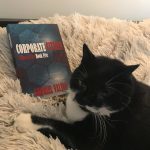 Leslie is intelligent, an operative in the intelligence community, painfully aware she’s working in a man’s world, and who doesn’t receive the respect she deserves. And she’s a killer when necessary. The other character is a young girl, a refugee named Tania. She is cynical, wise beyond her years, and broken. What I enjoyed most in creating these two characters was conveying experiences and points of views that are alien to men. The psychology of manipulation, to achieve, protect, and survive difficult situations. Men are the weaker gender in The Company Files series.
Leslie is intelligent, an operative in the intelligence community, painfully aware she’s working in a man’s world, and who doesn’t receive the respect she deserves. And she’s a killer when necessary. The other character is a young girl, a refugee named Tania. She is cynical, wise beyond her years, and broken. What I enjoyed most in creating these two characters was conveying experiences and points of views that are alien to men. The psychology of manipulation, to achieve, protect, and survive difficult situations. Men are the weaker gender in The Company Files series.
When and/or where is your latest book set and is there a story behind that setting?
My latest book is The Good Man, the first in another series. A second book, The Naming Game, is with the editor now. The Good Manopens in 1948, in Vienna, with a dead body. The CIA has just been officially formed, and my cast of characters is tasked to interview former Nazis in the arms-race against the Soviets before everything went sideways. The novel is drawn from Operation Paperclip, a multi-decade CIA operation. What fascinated me about the early days of the intelligence community was how gullible the CIA agents were then, and how steep the learning curve would become for the organization. The reality for Americans was George Bailey meets George Smiley.
The obscure slice of history intrigued me. Vienna became the Wild West with the Americans, the British, the French, and the Soviets vying for the upper hand in The Long Game. Jewish gangs roamed the streets (the state of Israel was a question mark) and refugees from eastern Europe were locked in a holding pattern.
Writing The Good Manis, I think, closer to my natural voice as a writer because the story is personal, and I’m comfortable with the material. I knew a Jack Marshall, station chief in the story, and a Sheldon, a Holocaust survivor and Nazi-hunter. The counterparts to these characters are now dead. Another thing I enjoyed in writing the series is that I admire the ethos of the time. Unlike commandos today who score book deals, movies and public admiration, the men and women (and I must emphasize there were women) who saw combat, and who worked in the OSS, later the CIA, they never talked about their exploits. To do so was uncouth and a betrayal to the oath they had taken. They were silent professionals and they slipped away into the shadows. It was a different era and, for better or worse, they came home and put their past in a lockbox and stored it in the attic or basement.
What are you working on now?
I’m editing two projects. One project is a trilogy that spans the Gilded Age. I’ve written the first and second of  the novels and edited the first. My other project is editing the long character arc in a five-novel series I’ve written about a Boston PI in Seventies Boston. The research and experimenting with different styles have been a blast.
the novels and edited the first. My other project is editing the long character arc in a five-novel series I’ve written about a Boston PI in Seventies Boston. The research and experimenting with different styles have been a blast.
Which question didn’t I ask that I should have?
Any advice on how to stay positive when the struggle to find readers and achieve visibility is difficult?
It has been a daunting struggle, and I wish I knew how to chamber the magic bullet. There’s a lot of talent out there. Readers are overwhelmed and writers are bewildered. I keep morale up by putting myself in contact with writers I admire. I’ve met so many wonderful people. Connie Johnson Hambley. Kellye Garrett. Shawn Reilly Simmons. Edith Maxwell. Eryk Pruitt. Danny Gardner. The list goes on. We’re all different writers and personalities, yet the crime fiction community is very supportive. It’s important to make that connection between the name on the book and the person. I’ve learned that we all have run into obstacles. Put yourself out there.
On that note, I’m introverted and shy by nature, so it’s very difficult for me to talk about myself. It is. Really. I have to force myself to attend Bouchercon, Crimebake, and Malice Domestic. Being around a large group of people and public speaking unnerve me. I had my first panel at Malice, with Anne Cleeland, Martin Edwards, Catriona McPherson, Lori Rader-Day and moderated by Kristopher Zgorski. My jaw dropped when I saw my name on that panel. There were no prep questions. I suppose Kris was short on time (he had received The Raven at the Edgars earlier in the week) so he wanted to ‘wing it’ and be spontaneous. I was a wreck, but I survived. Lori-Rader Day sat next to me on the panel and assured me everything would be okay. Standing Room Only event, too.
Hank Phillippi Ryan came over after the discussion, gave me a hug, and tweeted me. She really is the kindest, most encouraging and approachable person, and that’s my point: these are accomplished writers with established reputations and they made me feel welcome. Put yourself out there and you’ll be surprised. I met Louise Penny (twice) and was so impressed with how gracious she was to me and others. Writers write, but we are people. I happen to think crime writers are the coolest tribe, though. Put yourself out there and make the connection. You’ve written a series with feline detectives. I have two cats. Bruce Robert Coffin is another writer, with a great series, too, and we share a similar shade of humor. We laughed over how many miles he’s logged onto his truck to do events, or how he’d become frantic because he’d found a typo in his latest work and wanted to call his editor….at 3AM. Bruce is from Maine and destined to appear in a Stephen King novel one day. At close of day, I remain clueless as to how to find readers. I try my best to support other writers on social media. What else can you do? Look, it costs nothing to be kind, and it’s a joy when a reader or author sees your name at an event and says hi or thank you. It’s so ironic that in this screwed-up world, crime fiction is uplifting. Other than that, my advice is to keep writing, keep reading, keep getting better, and get out there.
Gabriel Valjan is the author of the Roma Seriesand The Company Filesfrom Winter Goose Publishing. His short stories have appeared in numerous journals, including Level Best anthologies. He’s a member of Sisters in Crime and lives in Boston’s South End where he enjoys the local restaurants and his two cats, Squeak and Squawk, keep him honest to the story on the screen. You can find his novels on Amazon or at the Winter Goose Publishing web site. Visit his website at: http://www.gabrielvaljan.com or on Twitter: @GValjan



